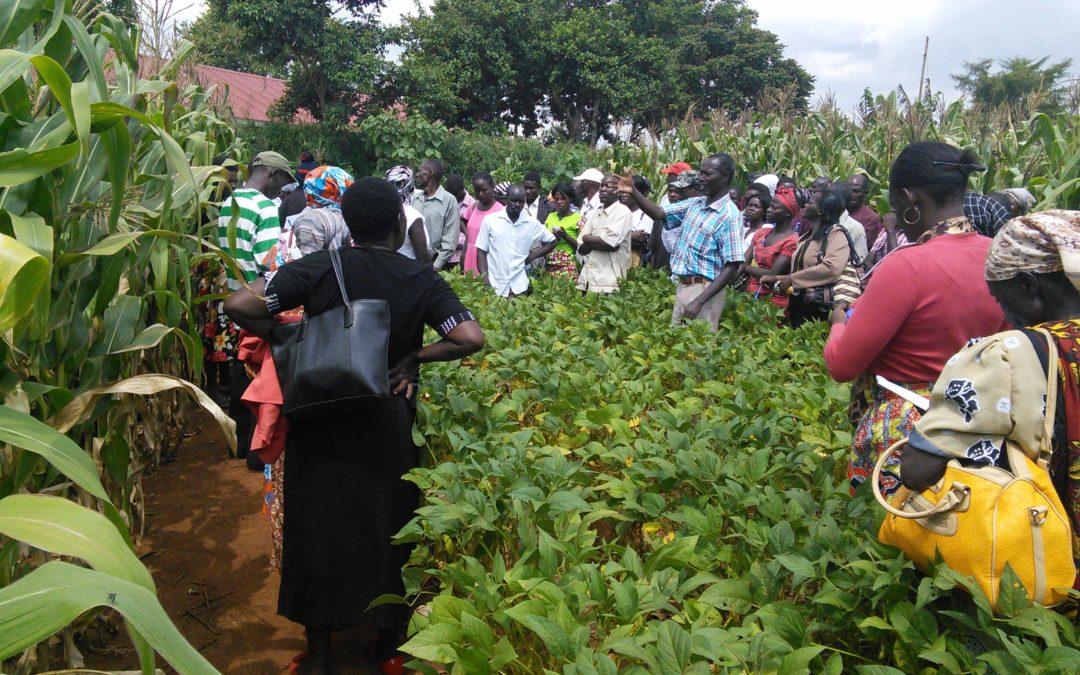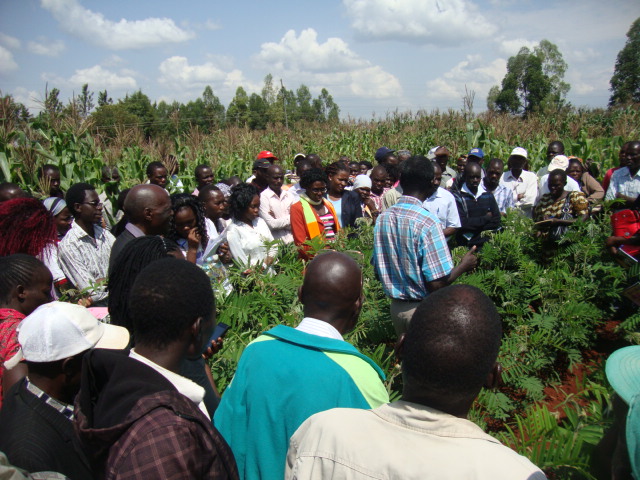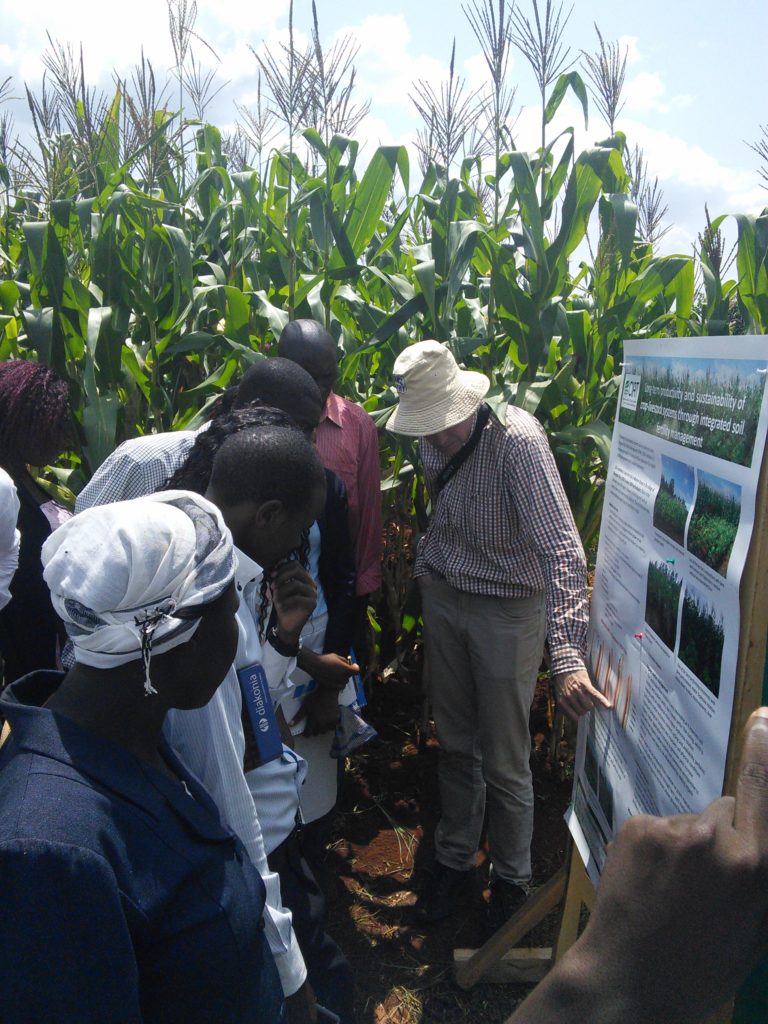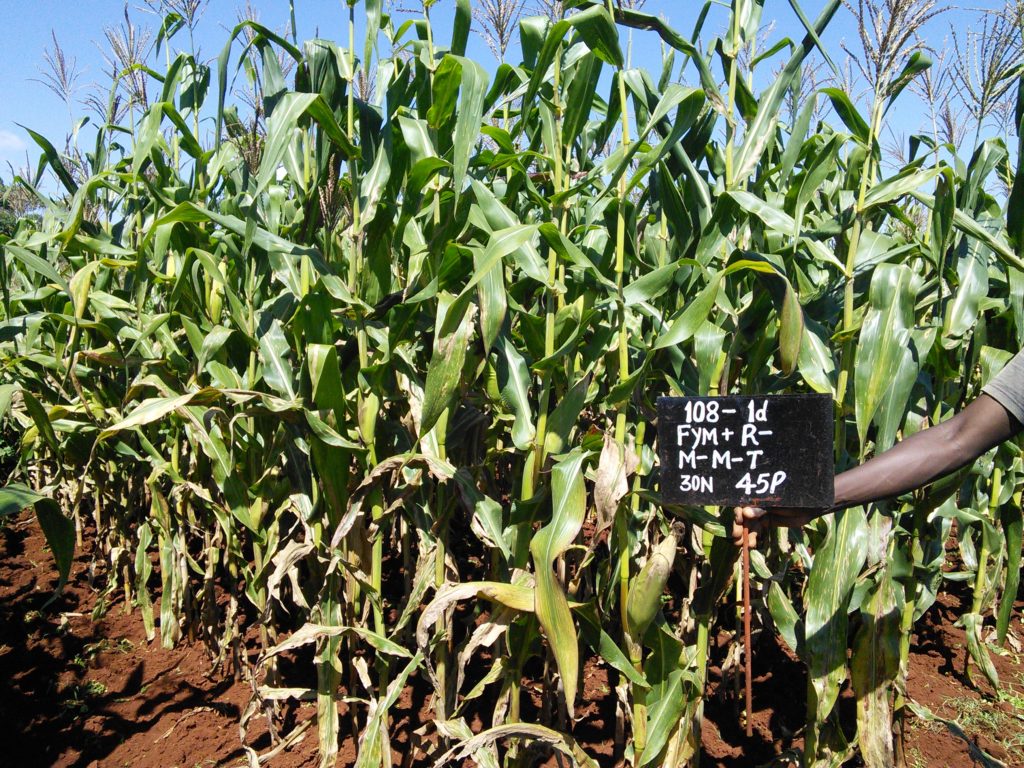Seeing is believing: the impact of soil management

For over a decade, CIAT has tested agronomic and soil management practices in Western Kenya. From minimum tillage to integrated soil fertility management, two trials, established in 2003, are the most comprehensive picture of tropical soil health that we have in Kenya.
What these trials allow us to do is show-case changes in soil fertility and health – for example the impact of conservation measures like minimum tillage, manure application or green manure cover cropping – on soil fertility and crop yields, and what happens if these are absent.
They also enable us to show the impact of cropping systems and rotations, providing farmers with advice about which mix of organic and mineral fertilizers can restore productivity to degraded soils, for example. These are not quick-fixes: they take time to develop, hence the importance of these long-term trials.
Over the years, the trials have been visited by hundreds of farmers, regional stakeholders, and students studying agronomy and soil health practices. They also provide a platform for students to pursue their BSc, MSc or PhD studies, and to dig into some of the fascinating aspects of soil biology and biodiversity.
Lessons learned: what’s in it for farmers?
During the last field day, themed: “Research for Long-term crop productivity and Soil health” in July, more than 176 farmers, half of them women, came from various counties in Western Kenya together with local extension officers. The practices we have tested during the trials were showcased to farmers.
What we have found during these long term trials and the feedback from farmers is that some technologies take a long time to yield results. Yet farmers cannot afford to wait for long if the technology comes with a yield penalty, or requires too many resources to start with. That’s why farmers were most impressed by methods they perceive as easy and affordable, which save time and boost yields.
We also have to remember that farmers are dealing with multiple constraints. For example, they own small plots of land or have communal land ownership – and land inheritance issues greatly inhibit a farmer’s ability to try new technologies. Some farmers fear that others may later claim the land and this may lead to financial losses if they have invested heavily.
Many farmers also highlighted that some new technologies are expensive to use, for example if significant amounts of commercial inputs have to be purchased, like mineral fertilizer, improved seeds, herbicides or pesticides. Loans are often expensive and expensive or risky to take, unless farmers are insured against potential losses.
What technologies that have worked?
Farmers will often use technologies they are familiar with. For example, for livestock feed, they will use Tithionia, a shrub for livestock feed, instead of the flowing plant Tephrosia, to plant in rotation with other crops to boost yields, because they know it has multiple uses: for livestock feed for goats and because it can prevent termites from attacking the crops. They are only familiar with Tephrosia to capture fish, and so are not likely to use it as livestock feed.
A key messages for farmers is that mineral fertilizer use application alone is not sustainable. Maintaining soil health long-term requires returning organic matter back to the soil; be it as green manure – special, often leguminous plants grown to produce organic matter to feed the soil – soybean, farm yard manure or compost. In addition, good agronomic practices – timely planting and weeding – are essential to make chemical fertilizers more efficient.
Soils with low organic matter content may also be unresponsive to mineral fertilizers and first of all need to be rehabilitated by adding organic resources.
Conservation agriculture, which among other things means disturbing (tilling) the soil as little as possible, can prevent further destruction of the precious soils, ensuring higher and more stable yields while reducing production costs and increasing labor productivity.
Conservation agriculture also includes protecting the soil surface by retaining crop residues like maize stover, to reduce erosion by fast-moving water or wind. This conservation soil moisture can also reduce weed growth and increase the rate of water infiltration into the soil.
Farmers may be reluctant to try these new technologies – but seeing is often believing.

Soil management is not a quick-fix: hence the importance of these long-term trials. Credit: John Mukalama
The field day was organized by CIAT, GIZ, Welthungerhilfe and GOPA and kindly supported by GIZ.
Photo Credits: John Mukalama and Rolf Sommer


